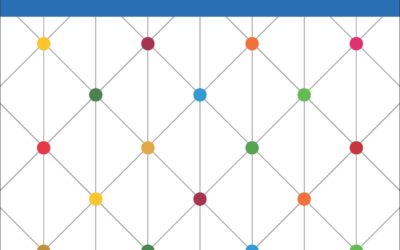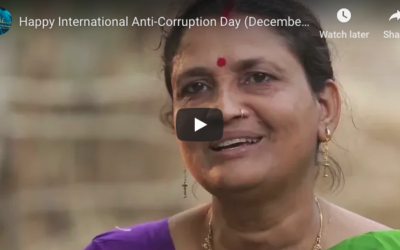The 2030 Agenda for Sustainable Development, approved by the UN General Assembly in September 2015, includes key elements on tackling corruption, justice, and other human rights, which were not part of the Millennium Development Goals. This agenda gives a new momentum to rethink approaches on how to promote transparent and accountable judiciary to deliver justice for all. A key imperative is to develop integrated solutions involving a range of actors working in the criminal justice chain and anti-corruption while exploring new pathways to involve the community.
“Transparent and accountable judiciary to deliver justice for all“—a forthcoming report by UNDP Bangkok Regional Hub and U4 Anti-Corruption Resource Centre-Chr. Michelsen Institute—highlights innovative experiences for promoting transparency and accountability within the judiciary. It explores the potentials of reforms and new technologies for involving the broader community in judiciary reforms. Experiences of community involvement range from providing a feedback loop on access to justice, being associated to reform processes, to scrutinising trials. The report also looks at the effectiveness of “internal” mechanisms for strengthening integrity and accountability within the judiciary such as vetting of judges, codes of conducts and judicial oversight.
The report draws on expert discussions during the 16th Transparency International’s International Anti-Corruption Conference in 2015, country experiences collected during a call for information in May 2015 as well as during an e-discussion on strengthening judicial integrity in 2013. The report includes case studies from Afghanistan, Nepal, Indonesia, Nigeria, Philippines, and Somalia. The report has four main parts and concluding recommendations (see below for full Table of Contents).
Section 1 looks at the cost of corruption on access to justice for the poor and marginalized who are particularly vulnerable because they cannot afford to pay bribes or gain access to influential networks. At the same time, these individuals are often the most in need of judicial responses to protect their human rights in criminal justice processes, access to public services, and disputes over legal title of land.
Section 2 discusses the main international principles and assessment tools available that address judicial integrity. The experience from Nigeria distils lessons from a multi-year judicial reform programme where the broader community was instrumental in developing a baseline for the reforms and monitoring progress over time.
Section 3 argues that although technology itself is not a panacea, automation of court services and proceedings can be a way to expedite procedures, avoid human interaction minimizing corruption risks, and provide access to court information and statistics to the citizens. Indonesia and the Philippines provide case studies on how technical solutions can open up judicial verdicts to public scrutiny.
In Section 4 innovative ways to involve the community to increase integrity and accountability from Afghanistan and Nepal are presented.
Section 5 focuses on more “internal” tools to strengthen judicial oversight mechanisms, but does so reflecting on their usefulness in different contexts, such as in Ukraine and Somaliland.
The report concludes with a call for more integrated analysis of corruption in the overall criminal justice chain as a condition for effective judiciary reforms, particularly looking at the role of the police and penal institutions.
For more information about this forthcoming publication, please contact: Elodie Beth, Regional Anti-Corruption Advisor, Bangkok Regional Hub United Nations Development Programme. elodie.beth@undp.org
Transparent and accountable judiciary to deliver justice for all
TABLE OF CONTENTS
1. Introduction
– Prevalence of corruption in the criminal justice chain: weak links
– Negative consequences on access to justice for the poor and marginalized
– Sustainable Development Goal 16
– Prevalence of corruption in justice systems worldwide
– The focus, sources, and structure of this report
2. International principles and assessment tools
– Bangalore Principles
– Integrity Scans and other tools
– UNCAC and Implementation Guide and Evaluative framework for Article 11
– Nigeria: Survey tools to develop an evidence-based multi-year judicial reform programme
3. Using new technology to foster transparency and access to justice
– Indonesia: Transparency and technology to reform the judicial sector
– Philippines: E-Courts as a means to enhance transparency and preserve integrity
4. Innovative ways to involve the community to increase integrity and accountability
– Afghanistan: Community-based monitoring of trials
– Nepal: Institutionalizing integrity standards
5. Strengthening judicial oversight mechanisms
– Lustration, vetting, asset declarations and other integrity mechanisms
– Somaliland: Strengthening judicial oversight mechanisms to effectively address corruption and malpractice
6. Lessons learnt and what ways forward?





